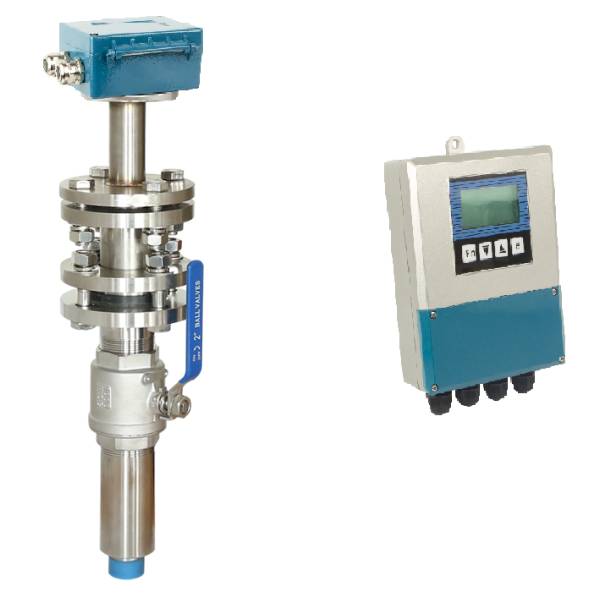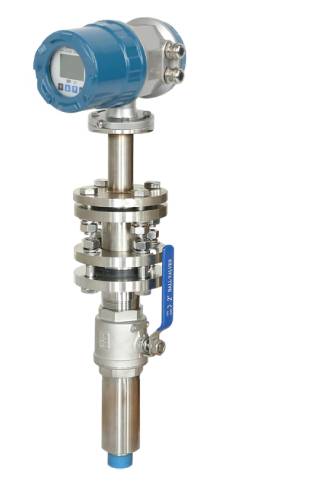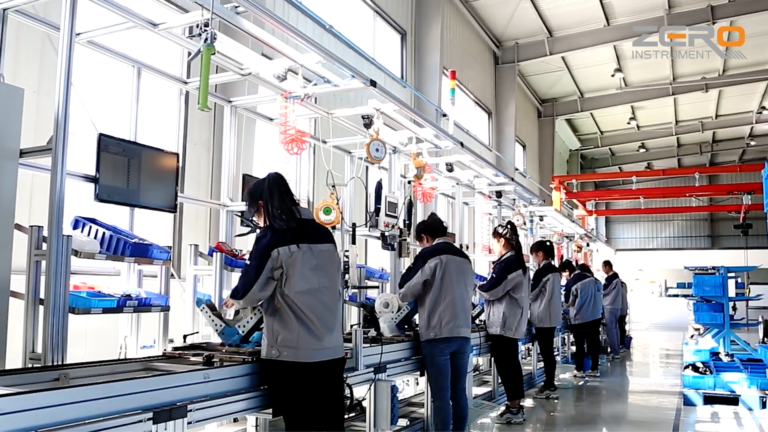The plug-in electromagnetic flowmeter is composed of a plug-in electromagnetic flowmeter sensor and a plug-in electromagnetic flowmeter converter.
It is used to measure the flow of conductive liquids, and is especially suitable for measuring large-diameter pipelines. Insertion-type electromagnetic flowmeters are widely used in production process flow measurement and control in petrochemical, iron and steel metallurgy, water supply and drainage, water conservancy irrigation, water treatment, environmental sewage total volume control, papermaking, medicine, food and other industrial and agricultural sectors.

In order to ensure the accuracy of the insertion electromagnetic flowmeter, what aspects should be paid attention to during installation? Let’s give you a brief analysis below.
1. Ensure sufficient straight pipe length.
When the direction, pipe diameter and valve opening of the measured fluid change, eddy currents and flow field distortion will occur, which will affect the measurement of the flowmeter sensor electrode and thus affect the accuracy of the instrument.
Therefore, when installing the plug-in electromagnetic flowmeter, keep a certain distance from elbows, hand valves, regulating valves and other components as much as possible.
2. Try to avoid sources of interference
In order to ensure measurement accuracy, the flowmeter sensor should avoid installation in places where vacuum, gas, eddy currents, etc. are prone to occur.
The communication cable between the sensor and the smart transmitter should avoid strong current equipment such as motors. At the same time, attention should be paid to avoiding magnetic fields as much as possible. , strong earthquakes, current signals and other interference sources.

3. Ensure the perpendicularity between the fluid and the sensor magnetic field
When installing the pressure-taking short pipe in the opening of the pipeline, attention should be paid to keeping it perpendicular to the fluid.
It is required that the angle between the axis of the short pipe and the axis of the pipe after welding is 90°, and the extension line of the flange short pipe connection passes vertically through the center of the pipe section, so It can ensure that the fluid is perpendicular to the magnetic field, thereby ensuring the measurement accuracy of the flow meter.
4. Ensure the correct insertion depth of the sensor
Due to the laminar flow phenomenon of fluid in the pipe, the flow rate of the fluid close to the pipe wall is relatively slow, and the flow rate of the fluid close to the center of the pipe is relatively fast.
According to the calculation, 1/2 of the pipe is closest to the average velocity of the fluid. When installing, calculate the wall thickness of the pipe and the length of the flange nozzle to ensure that the electrode insertion depth of the sensor is at the 1/2 position. However, there are also a few that are installed at the 1/4 position of the pipe. Be sure to carefully study the installation instructions in the manual before installation.

5. Ensure good grounding and electrical connections
When the fluid cuts the magnetic field lines to generate a flow signal, the fluid itself is used as 0 potential, a positive potential is generated on one electrode, and a negative potential is generated on the other electrode, which changes continuously. Therefore, the midpoint of the converter input end (signal cable shield) must be at 0 potential and conductive with the fluid, so that a symmetrical input loop can be formed.
The midpoint of the input end of the converter is electrically connected to the measured fluid through the ground point of the sensor output signal. Since the output signal of the sensor is very small, only a few millivolts, in order to improve the anti-interference ability of the instrument, the 0 potential in the input loop must be grounded.
Since generally metal pipes are connected to the earth, the flowing medium is electrically connected to the earth through metal pipes, so the electromagnetic flowmeter is not required to have a separate grounding device, especially for small-diameter electromagnetic flow sensors. If it is a non-metallic pipe, it must be connected to a separate ground wire.

The insertion electromagnetic flowmeter is a new type of fluid flow meter developed on the basis of the pipeline electromagnetic flowmeter. On the basis of retaining the advantages of pipeline-type electromagnetic flowmeters, it uses electromagnetic methods to measure the average flow velocity of fluids based on the principle of NIKURADS. , thereby obtaining the volumetric flow rate of the fluid. Especially after adopting the pressure drilling and pressure installation technology, the plug-in electromagnetic flowmeter can be installed without shutting down the machine (water), and can also be installed on cast iron pipes and cement pipes.
